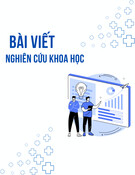2/e
P
P T
©2007 by the McGrawHill Companies, Inc. All rights reserved.
14
The Business of Change and Conflict
©2007 by the McGrawHill Companies, Inc. All rights reserved.
McGrawHill/Irwin
The Business of Change
• What Does Change Mean?
◦ when an organization begins to transform the way work is accomplished—which means a breakdown of business as usual
• Who Carries the Flag of Change?
Change
◦
people who facilitate the coordination of a change effort
3
Change makers
The Business of Change
When change makers share ideas and plans, employees understand and can participate in change efforts.
© Keith Brofsky/Getty Images
4
The Business of Change
• Why Do Organizations Change?
• Competition
• Corporate mergers and acquisitions
• Changing consumer demands
• Globalization
• Technology
• Government regulations and policies
5
• Change of management
The Business of Change
• Why Do Organizations Change? (continued)
◦ manufacture and sale of goods or services to
multiple markets around the world
6
Globalization
What Happens When Organizations Change?
Communication vacuums
◦ occur when employees perceive a void in
7
which they are not given adequate information about what is happening in the organization
What Happens When Organizations Change? FIGURE 14.1 Communication Vacuum
During change, some employees feel like they are in a communication vacuum. It’s like being in an isolation booth without information about what’s going on in the organization.
8
What Happens When Organizations Change?
• The Face of Resistance
Fear
Interruption of routine
Loss of faith, trust, and personal investment
9
Feeling that past efforts are meaningless
What Happens When Organizations Change?
• Reducing Resistance
◦
acceptance of and agreement to change
10
Employee buy-in
Change Communication
FIGURE 14.2 Multidirectional and Multimedia Communication
11
Change Communication
• Multidirectional and Multimedia
Communication
◦
design of messages that can reach all employees throughout the organization
Multidirectional communication
◦
use of many channels to transmit a message
12
Multimedia communication
Change Communication
• Unintended Messages
• Provide Reasons
• Timing
13
Change Communication
• Practice Change Communication Design
Open up the new corporate vision
Connect vision to employees
Include new vision in the corporate culture
Encourage employee role in the vision
14
Reduce vision resistance
The Process of Conflict
• What Is Conflict?
◦
an event expressed through communication when individuals or groups behave in ways that indicate they have incompatible positions or goals
15
Conflict
The Process of Conflict
• Who’s Who in Conflict
◦
different parties involved in a conflict
Disputants
◦
problem that occurs within a single group of people
Intragroup conflict
◦
problem that arises between two or more groups
16
Intergroup conflict
The Process of Conflict
• The Real Issues
◦
a definitive goal or demand advanced by one or both parties that underscores an attitude or disposition
Position
◦
reasons or motivations underlying a position
17
Interests
Conflict Communication Skills
• Listen and Learn
• Verbal Diplomacy
• Flexible Interpersonal Style
18
Types of Conflict
• Communication Conflicts
• Social View Conflicts
• Fundamental Interest Conflicts
• Business Conflicts
19
Traditional Conflict Strategies
Negotiation
20
◦ a give-and-take technique to achieve accord through a process of compromise or the offering of proposals and counterproposals
Traditional Conflict Strategies
Positional bargaining
Mediation
Conflict management
Arbitration
21
Transformative Communication in Conflict
Transformative communication
◦
• Dialogue Transformation Strategy
focuses on interaction and relationship building by reframing the terms and concepts of conflict
◦
a relationship-dialogue process that can be used to modify differences and disputes
22
Dialogue transformation
Transformative Communication in Conflict
• Explore Interests and Emotions
• Reframe and Replace Expectations
• Convert and Resolve the Conflict
23
Transformative Communication in Conflict
• Practicing Dialogue Transformation
Exploring interests and emotions
Reframing and replacing expectations
24
Converting and resolving
Questions
25





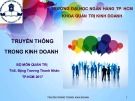
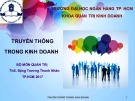
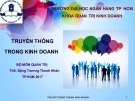
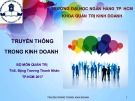

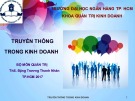
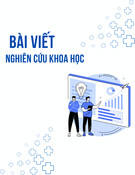

![Đề thi kết thúc học phần môn Truyền thông trong kinh doanh [năm học mới nhất]](https://cdn.tailieu.vn/images/document/thumbnail/2025/20251015/dilysstran/135x160/93281760499390.jpg)

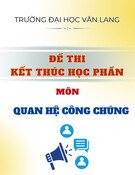
![Bài tập nhóm truyền thông marketing tích hợp [mới nhất]](https://cdn.tailieu.vn/images/document/thumbnail/2025/20250904/hakanami1502@gmail.com/135x160/90671756969236.jpg)
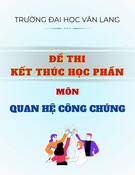

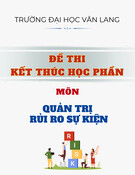


![Định vị doanh nghiệp: Bài thuyết trình [Mới nhất]](https://cdn.tailieu.vn/images/document/thumbnail/2025/20250813/vuthuhuyen1407/135x160/6261755072381.jpg)

